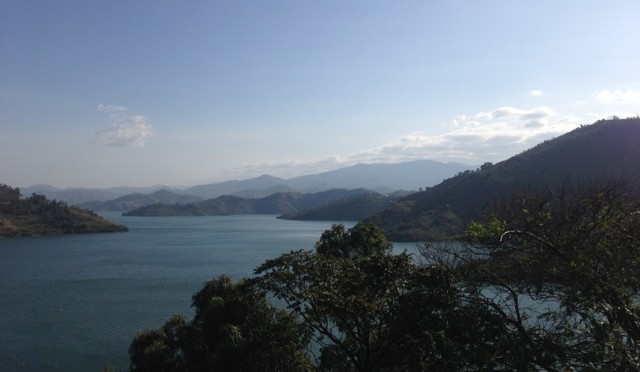One of the major tourist attractions is Rwanda is Lake Kivu, one of the African Great Lakes, and Rwandans and foreign tourists alike vacation on its shores.1 The most popular holiday town along the lake is Gisenyi, with off-the-beaten-path Kibuye also being touted as a lovely location. We decided to visit both of them, starting with Kibuye and then making our way up to Gisenyi.
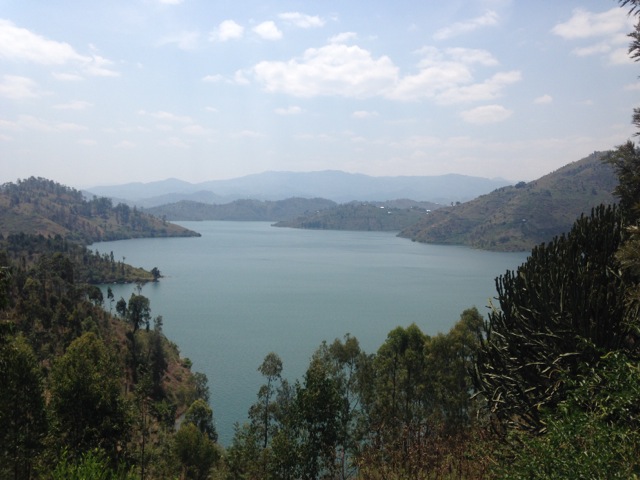
Before getting to Kibuye and Gisenyi, allow me to share with you a selection from a text box in our guide book (Lonely Planet East Africa, Ninth Edition) (emphasis mine):
… Lake Kivu is one of only three known ‘exploding lakes’ … which experience violent lake overturns dubbed ‘limnic eruptions.’
Um, what? An exploding lake? What does that mean?
This rare type of natural disaster results when carbon dioxide (CO2) suddenly erupts from deep lake water, suffocating wildlife, livestock and humans, and causing violent tsunamis. … While not as catastrophic as a full-scale eruption, in the absence of a strong wind, toxic gases can also collect on the surface of the water, and quite a few people have been asphyxiated as a result.
Oh. Sounds … lovely.
Moral of the story: watch where the local people swim, and make sure you’re doing the same.
Or don’t get into the lake at all, which is the option that we chose. Instead, we opted to admire Lake Kivu from its shores.
Kibuye
The bus ride from Kigali to Kibuye is pretty low-impact: it only takes about three hours and travels along a well-maintained road.2 Even better, the road twists and turns along the green slopes of Rwanda’s countryside, and the views are breathtaking.
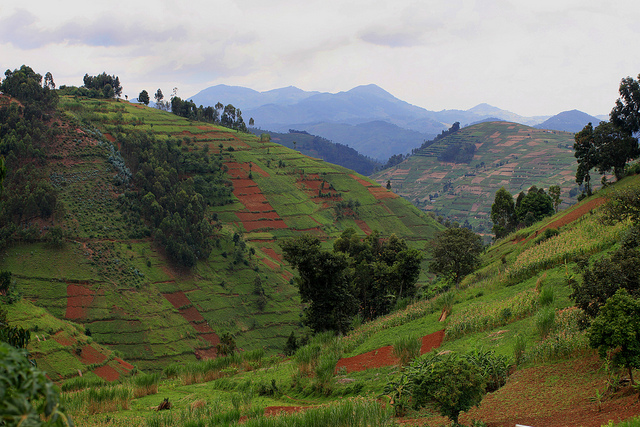
Our hotel overlooked Lake Kivu from a hill, and we tried to spend most of our time there taking in the peaceful view. (Operative word being tried: the hotel’s concrete deck and plastic furniture didn’t actually lend itself to quiet contemplation or relaxation.)
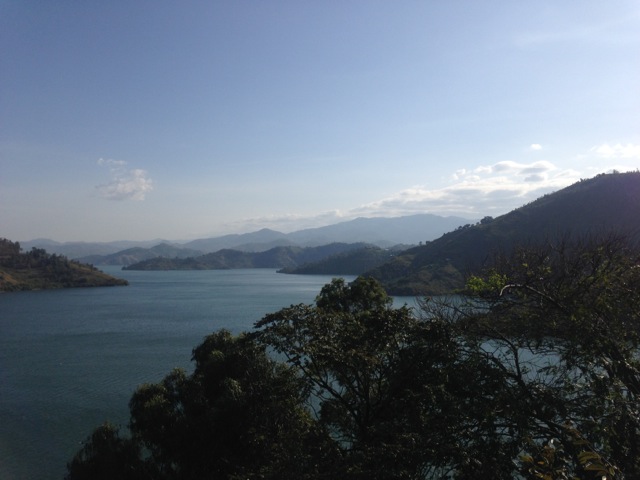
Kibuye has a dark history, being the site of one of the most horrific massacres during the 1994 genocide. Visiting St. Jean Catholic Church, where more than 11,000 people were killed, is a sobering experience.3 The church has been rebuilt and is still in use, and it also houses a genocide memorial.
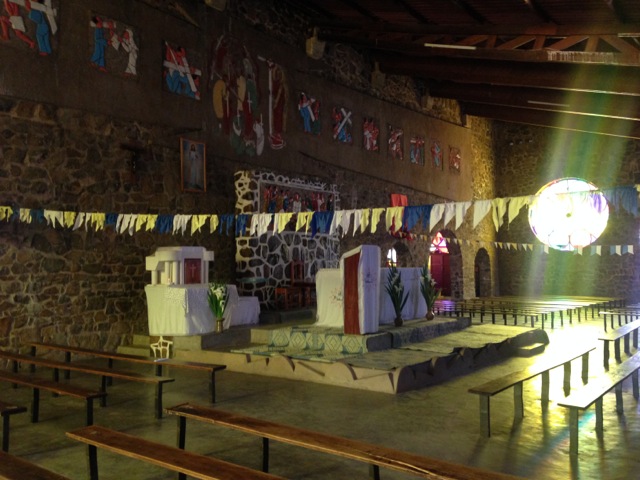
Gisenyi
Although Gisenyi and Kibuye are the most well-known destinations along Lake Kivu, the road that connects them is not easily traveled. Everything that we read about the overland journey between the two places sounded horrible, from the condition of the roads and vehicles to the alleged mob scene in trying to secure a seat.
Instead, we planned to take the ferry up to Gisenyi. Upon arrival in Kibuye, we asked someone at our hotel when the ferry left, and were told that it left on Wednesdays. Later that day, which happened to be Tuesday, we were walking along the lake when we saw the ferry docked in Kibuye and picking up passengers. We spoke with some locals and discovered that our hotel had been wrong: the ferry left on Tuesdays. We had missed our chance to take it. Hiring a private boat was prohibitively expensive, and so we talked to a couple of bus companies to determine the best route to Gisenyi.
Capital Express (the same bus we had taken up from Kigali) sold us tickets to Muhanga, where we then switched to a minibus heading to Gisenyi. The trip was somewhat cramped, but nowhere near as uncomfortable as I had been anticipating. Once in Gisenyi, we rode moto taxis (with our packs on our backs!) out to Paradis Malahide, where we were staying. In a manner that we have resignedly come to accept during our African adventures, the entire door to door journey, which ultimately deposited us only about 70 kilometers up the lakefront form where we started, took nearly eight hours.
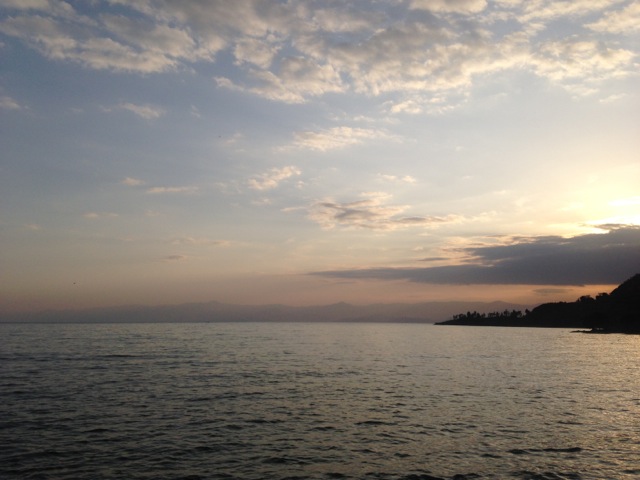
Gisenyi definitely has more a resort feel than Kibuye. The town itself is much larger, and its streets are lined with trees and colorful foliage. We particularly enjoyed watching the fruit bats roosting in the palm trees, noisily moving about just before sunset.
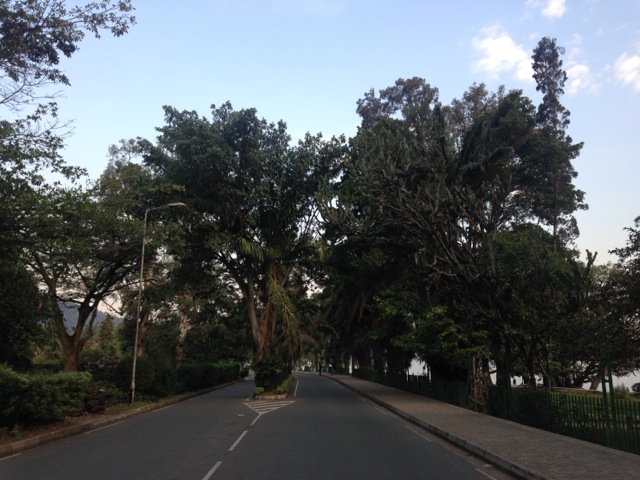
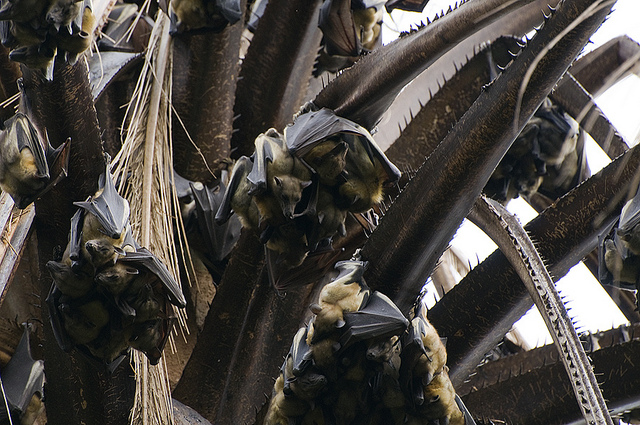
People were drinking in the lakeside bars, playing games on the public beach, and frolicking in the water. We joined them, strolling along the beach and then getting a drink as we watched the sun set over the lake.
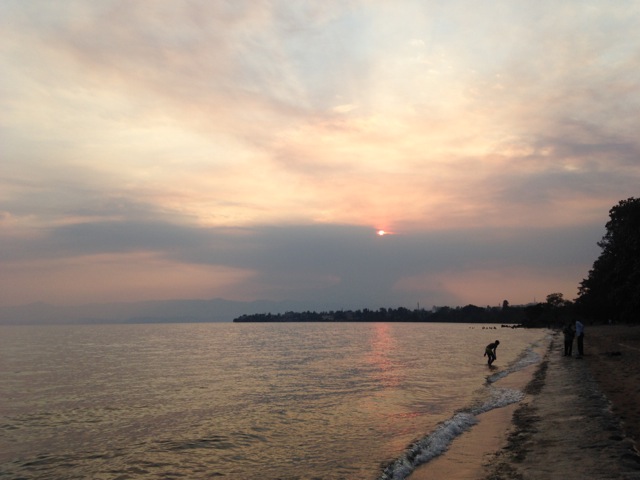
Gisenyi is located along Rwanda’s border with the Democratic Republic of the Congo, sitting adjacent to its much larger Congolese counterpart, the city of Goma. One day, we had moto taxis drive us to the border, where we could see Goma just on the other side, looking far more nice and orderly than we had expected.
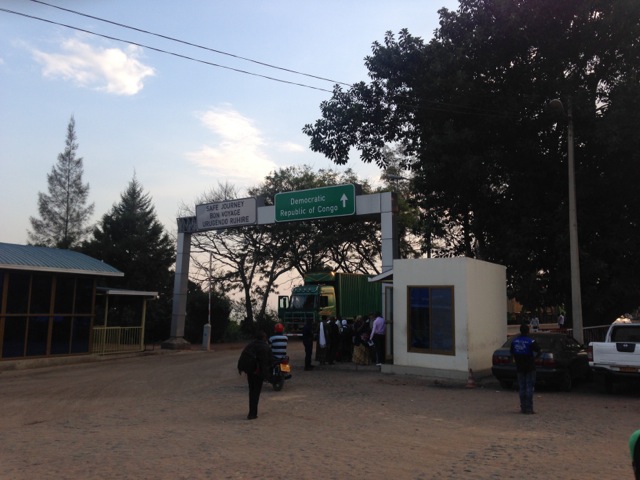
From Gisenyi, we could also see Mount Nyiragongo, the volcano that destroyed a significant part of Goma when it erupted in 2002.
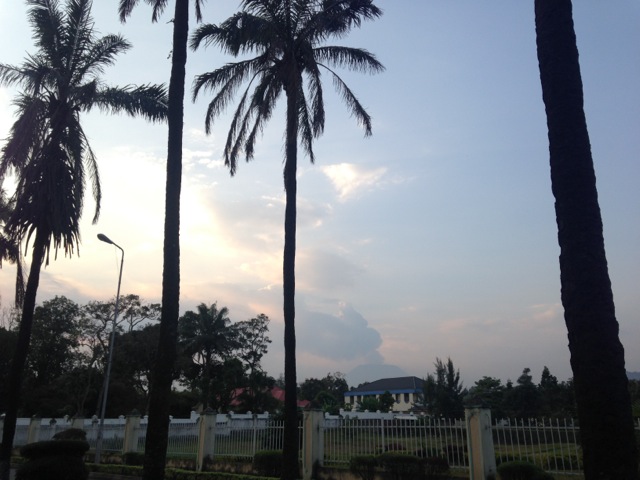
Where We Stayed:
☆ Home St. Jean, Kibuye. Two goats. We might have enjoyed our stay more had we not received the last available room – a small, hot room next to the kitchen. We also might have enjoyed our stay more if there hadn’t been a huge group there – one night, we waited two hours for dinner, which was astonishing, even by East Africa standards.
☆ Paradis Malahide, Gisenyi. Four goats. Paradis Malahide was so relaxing. Our room was comfortable, the staff was incredibly nice (helping us to find a room in Kigali after our hotel there canceled on us), and the food (especially breakfast) was decent.
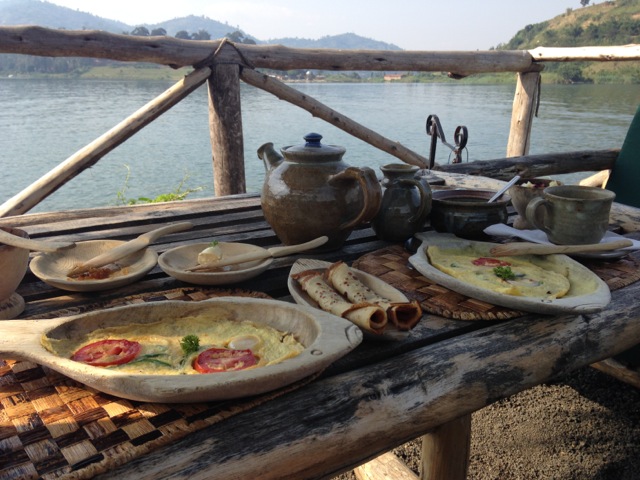
1 Trekking with mountain gorillas, and hiking through the rain forest to see chimpanzees are also two of Rwanda’s signature attractions. Because we had already signed up for a two-week tour through Uganda that also included these activities (posts forthcoming!), we decided to limit our plans in Rwanda to checking out Kigali and relaxing along the Lake Kivu.
2 Travel note: We took the Capital Express bus and found it to be a comfortable ride. If traveling with large luggage, be prepared to pay for an extra seat (a reasonable requirement as there is very little storage space and your bag may be displacing a paying passenger). We paid for one extra seat and put both of our large packs in it.
3 If you want to read more about the Rwandan genocide, I recommend We Wish to Inform You That Tomorrow We Will Be Killed With Our Families by Philip Gourevitch. The title of the book was taken from a letter written by people who had sought shelter inside the St. Jean Catholic Church.

